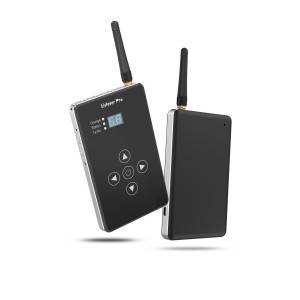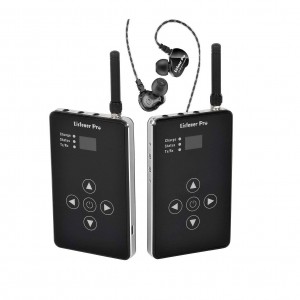Professional Wireless Audio Transmitter and Receiver
WIRELESS AUDIO TRANSMITTER AND RECEIVER SYSTEM
The needs for wireless in-ear monitor system/ in-ear monitor set have been increased day by day because with the social-economic rapid developed and more and more people are paying attention to entertainment life. Music is an indispensable part of people’s daily life.
Features
1. Integrate transmitter and receiver all in one and switchable, as the first time in this filed
2. Support Audio & Mic input at the same time
3. Support local monitoring function when transmitting
4. Support local mixing function when receiving
5. Lock screen switch support anti-mistouch function
6. Multi-level adjustment of Mic input gain, accurately matching various microphone gains
7. Support multiple usage methods such as hand-held, waist hanging, sling hanging, hot-shoe installation, and tripod installation.
Performance
1. Ultra-long transmission distance (indoor≥300m, outdoor≥1000m)
2. Lossless stereo sound quality (64K sampling rate, lossless stereo sound transmission)
3. 0.01s ultra-low latency (long-distance digital transmission, benchmark-level delay)
4. Working time on transmitting mode is ≥8hs, and working time on receiving mode ≥12hs
Application
1. Digital wireless in-ear stage monitor system
2. Digital wireless interview recording system
3. Digital wireless digital tour guide system
4. Musical instrument performance wireless transceiver system
5. Professional digital audio transceiver system
Single System for Performers
In-ear monitors for singers: the wireless audio receiver can be operated with a single transmitter within the operating range.
Performers can monitor audio from the same transmitter, simply tune each bodypack to the same frequency as the transmitter.
Each bodypack has an auxiliary mic input and monitor output. Performers can adjust the signal input and output in audio transmitters to get personalize mixing and monitoring.
Multiple Systems for Performers
Multiple in-ear monitors are needed when several performers in different groups, transmitters should be on different frequencies to send different mixes. Performers tune each bodypack to the frequency for their group.
Support at most 6 systems working at the same time without mutual interference.




